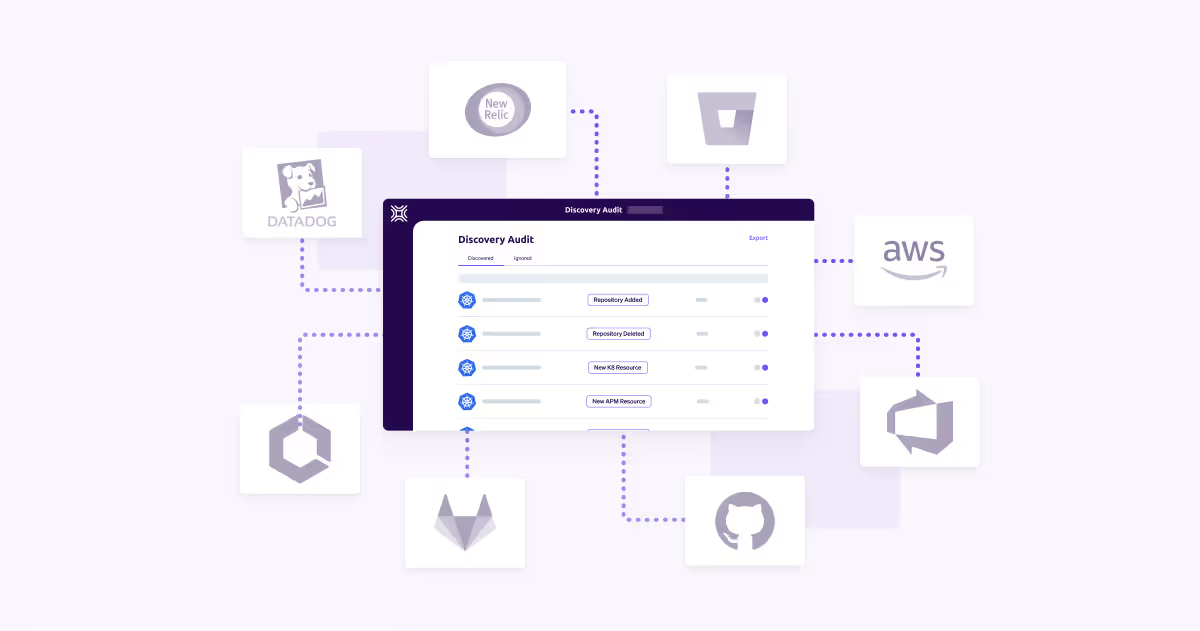A microservices catalog is only useful if you are confident that anything stored in it is fully accurate and that the information will not become outdated. How can you be certain that your catalog stays up-to-date in the future? Should you look for an asset in the catalog and, despite finding it there, also double-check GitHub? The service catalog is supposed to be your single source of truth. The purpose is defeated if you have to look for what you need in multiple different places. We at Cortex have built Discovery Audit to help you avoid falling into this trap and build your confidence in your service catalog.
The objective of Discovery Audit is simple: to keep your catalog up-to-date as your applications evolve. Every 24 hours, the auditing functionality will check data from all third party integrations to ensure it’s synced with the catalog. For example, it will pull from Kubernetes, look across your various repositories, newly monitored data coming from observability tools like New Relic or Datadog, and more, and compile a list of events. Discovery Audit takes stock of the current content in your catalog and compares that with the list of compiled events. This means you can ensure your catalog is the source of truth as this additional data is added into Cortex. For any assets that are new or are missing from your catalog, you can choose to either import them directly from the Discovery Audit or associate them with a service.
Of course, as necessary, you can ignore any recommendations. You may have an Event Exporter that is a built-in Kubernetes asset that you can confidently ignore. This data will be hidden under the Ignore tab.
You may also encounter a situation in which a relevant service already exists in Cortex, but is not currently associated with an entry discovered in one of your third-party tools. If you detect a new asset or repository in New Relic, you can associate it with a service in Cortex YAML. Once linked, it won’t appear in your Discovery Audit dashboard. You no longer need to worry about stray assets or services, and will be assured that they are where you need them to be.
On the other hand, if you no longer see an asset in the external environment, i.e. if it is deleted or archived, you can delete the corresponding service in your catalog. If Discovery Audit detects something that no longer exists in Datadog but does in Cortex, it will be flagged. You will be able to confirm if this finding is valid, given that it is no longer being monitored. The audit will tell you which other services, if associated with it, would be affected if you choose to proceed with the deletion.
Making the most of Cortex Discovery Audit
Discovery Audit uses a lookback window to keep you informed of related activity in third-party applications. If it detects anything out of the ordinary in these tools in a certain timeframe, the Audit will flag it. By monitoring the integrations, Cortex gives you an added boost of confidence in the status of your service catalog.
Finally, we recommend replicating “Inbox Zero” by frequently reviewing every service in your Audit dashboard and either importing or ignoring the entries. Doing so will guarantee that any additional asset that is surfaced is something that needs your attention and should be accounted for. It is good practice to check in with the Discovery Audit often to be sure that you are not losing track of anything, and are ignoring everything that is no longer relevant.
The Cortex platform has everything you need
At Cortex, we have intentionally built a platform of products that not only work well on their own but whose power you can truly harness by combining their use.
The Service Catalog houses the entirety of your microservices. Every time you want to create a new microservice, you can do so with the Scaffolder. This ensures that all new projects are automatically tracked in your catalog.
With Discovery Audit, your team will have confidence that your service catalog automatically captures all the information and data that comprise your project.
Book a demo with us today to get started.





